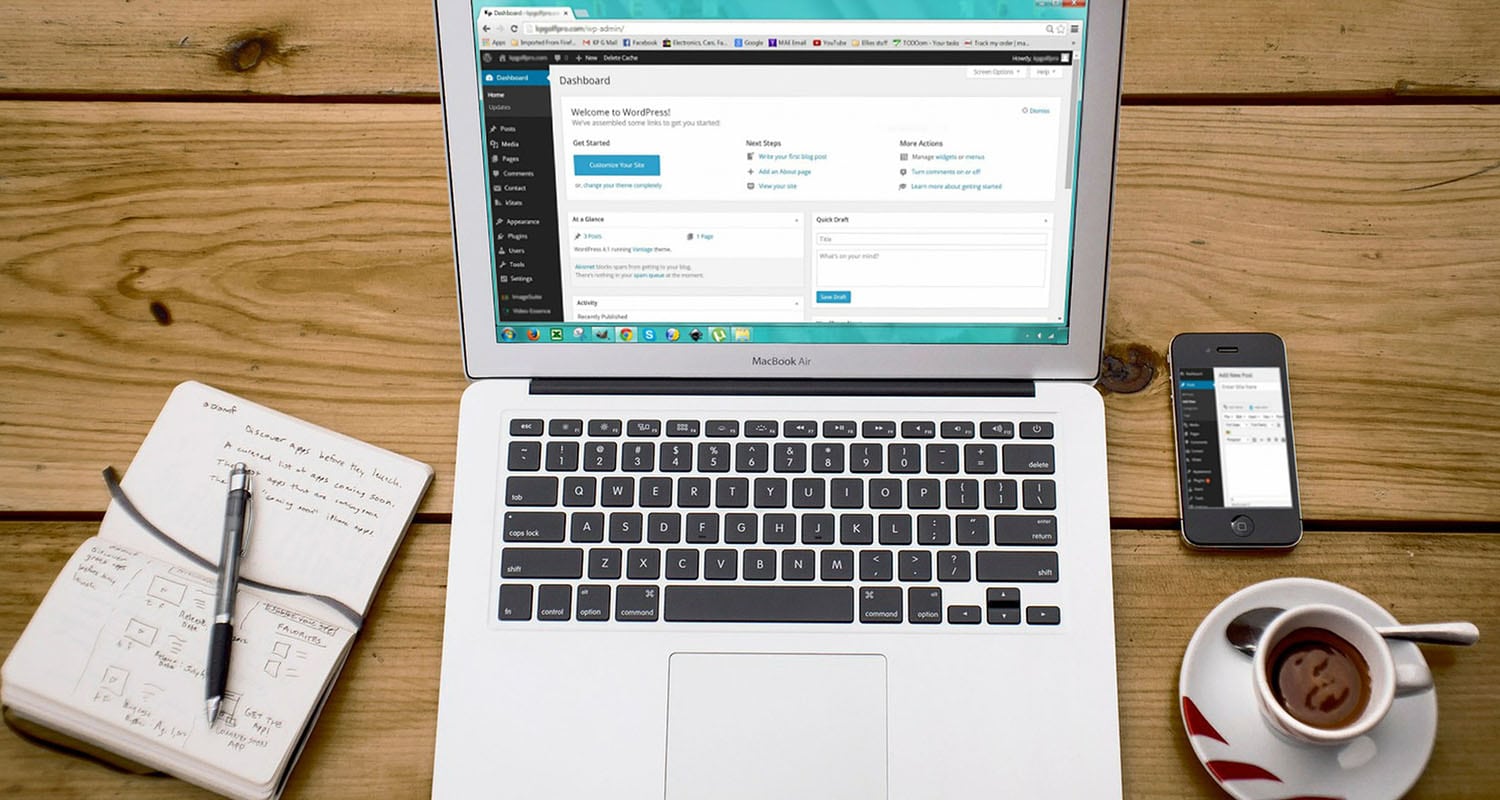With the availability of user-friendly platforms like WordPress and Wix (and a host of others) anyone can build their own website relatively easily, quickly and free. This is a good option for those who simply need some kind of web presence fast and don’t have the money to invest in a professional website. However, when it comes to building a professional website that gets results there is an art and a science.
Whether you are going to build your own website by yourself or hire a web design company to do it for you, a simple five step process should be conducted. The five steps are: vision, brainstorm, plan, design and develop. The mistake many businesses make is they basically say “here’s my vision, now let’s develop it!” It’s important to do all of the prelim work before getting caught up in developing a sub-par website.
1) Vision
 The vision of the website is always provided by the owner – the one whose website is being built. If your vision is simply “I need a web presence”, then a basic single-page splash site might suffice. However, with all of the marketing and branding potential there is available you should think a little bigger. When thinking about the vision of the website, it’s helpful to ask the following:
The vision of the website is always provided by the owner – the one whose website is being built. If your vision is simply “I need a web presence”, then a basic single-page splash site might suffice. However, with all of the marketing and branding potential there is available you should think a little bigger. When thinking about the vision of the website, it’s helpful to ask the following:
“Who is my target market?”
“Who else would potentially visit my website?”
“How do I want to position myself/my company to my visitors?”
“What information do my visitors expect to see on my website?”
“What information do I want my visitors to see?”
“What actions do I want my visitors to take?”
Answers to these questions help determine the overall vision of your website; and having a clearly defined vision helps any web designer think about ideas that could help fulfill your vision.
2) Brainstorm
 When working with a web designer, collaboration is key. The brainstorming step consists of one or more meetings where you educate them on your company and industry, and let them know your overall vision. They in turn offer suggestions and solutions for various ways to accomplish your vision.
When working with a web designer, collaboration is key. The brainstorming step consists of one or more meetings where you educate them on your company and industry, and let them know your overall vision. They in turn offer suggestions and solutions for various ways to accomplish your vision.
Again, when working with a company, collaboration is key, but if you are designing your own website, research is key. Look at your biggest competitor and see how they are tackling their vision (be cautious, however… just because a business is big doesn’t mean they’re doing it right). Also research different tools, methods and industry standards.
3) Plan
 After you brainstorm with a web designer (or do research on your own) it’s time to put a game-plan together. This is the drawing-board phase. At Butler, we literally use a drawing board (or sketch pad) to write out our plan to develop a website. Proper planning should produce a website narrative, some initial copy (written content for each page), a site map and a wire frame.
After you brainstorm with a web designer (or do research on your own) it’s time to put a game-plan together. This is the drawing-board phase. At Butler, we literally use a drawing board (or sketch pad) to write out our plan to develop a website. Proper planning should produce a website narrative, some initial copy (written content for each page), a site map and a wire frame.
4) Design
 Designing should be a very painless process if good planning was conducted. A design is essentially taking the skeleton (the wire-frame) that was created in the planning step, and putting meat on the bones. If brand guides (a set of basic design rules to follow for a particular brand) don’t exist, then make one before spending too much time designing. It can be as basic as choosing a standard color palette to use, as well as font family, style and sizes.
Designing should be a very painless process if good planning was conducted. A design is essentially taking the skeleton (the wire-frame) that was created in the planning step, and putting meat on the bones. If brand guides (a set of basic design rules to follow for a particular brand) don’t exist, then make one before spending too much time designing. It can be as basic as choosing a standard color palette to use, as well as font family, style and sizes.
No coding is required for a website design. In fact, sometimes it’s better to design a website (at least the Home Page) in graphic editing software like Photoshop before doing a single line of code or developing on a CMS. It’s better to focus on how you want your website to look and your user interface to function without having to be distracted or disappointed with the development.
5) Develop
 Once your vision has been planned out and designed, you’re finally ready to develop your website. This is the technical step where all the nuts and bolts are put together. Depending on how big the project is, the development phase should be relatively quick as long as thorough planning and good designing have been done.
Once your vision has been planned out and designed, you’re finally ready to develop your website. This is the technical step where all the nuts and bolts are put together. Depending on how big the project is, the development phase should be relatively quick as long as thorough planning and good designing have been done.
In Conclusion
When working with a web design company, the cost and the end result of your project will all be determined based on who does what. For example, you could save a lot of money by doing the leg work of brainstorming, researching different ways to best accomplish the project, writing out a plan including a site map and all written content, and then handing it over to a web design company to design and develop it.
The benefit of doing this is that you save money and (assuming you are working with a decent company) the turnaround time on development should be very quick. However, the downside is that the brainstorming and planning phases could take a lot longer than if you were to have the assistance of a professional company, and there are many factors that you may have missed or not considered if you are a “rookie”. Whether you work with a web design company for all 5 steps or decide to take on some of the responsibility yourself, it’s important that you make sure that none of the steps are overlooked.





